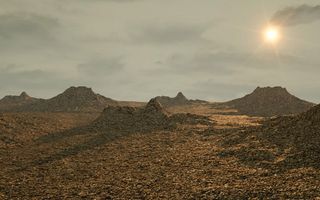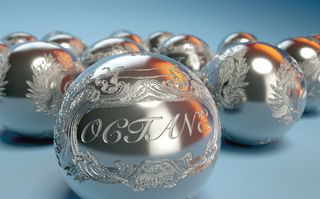Why you can trust Creative Bloq

Octane is a GPU-accelerated renderer which lets you import scenes in Alembic, OBJ or ORBX formats, apply materials and lighting, and then produce a physically accurate rendering. The app itself is perfectly serviceable, and provides a lot of deep access via its node-based scene setup and materials system.
However, it's not the most artist-friendly of tools, and we suspect that the majority of users are hooked into Octane via a dedicated plug-in – there are more than a dozen available for everything from Blender and Poser to Cinema 4D, LightWave, Modo and a range of Autodesk's apps.
The key thing with Octane is its speed and quality: it provides very rapid initial feedback, even on complex scenes, and its unbiased nature (effectively like switching your CPU renderer to Monte Carlo pathtracing) will, eventually, resolve to produce beautiful, photorealistic results.
Version 2.0 extends Octane's usefulness with some major additions, most notably object motion blur, displacement, hair, curved edges, region rendering, plus support for Pixar's OpenSubDiv (which is itself GPU-accelerated).
Micropolygon displacement
Octane's displacement is a true micropolygon implementation enabling you to add any amount of detail to even a single poly, and have it displaced perfectly; no more worrying about subdivision surfaces, levels of tessellation and so on.
The only downside is that currently it's limited to bitmap textures (although some plug-ins convert procedurals on the fly), and for best practice you'll need to use a 32-bit texture and an object with UVW coordinates. However, the end results are excellent and it's a great way of adding detail without needing to model it.

Rounded edges rendering
Edge rounding is a render-time technique that softens straight edges, faking the highlight that small bevels produce. It works well, but only with very small amounts; larger values produce weird effects and it doesn't work well with mixtures of large and small polys or angled corners.
To be honest, we've not seen many edge-rounding systems that work well enough to consistently replace actual geometry, but it might come in handy in a pinch. One small, but extremely useful addition is the ability to mix HDRIs with the built-in daylight function. Octane often works well with HDRIs alone, but now you can use its wonderful daylight system for your main lighting and an HDRI to provide the background imagery and reflections, which is ideal for products and exterior shots.

Octane 2.0 is an impressive release, and while the app still has a way to go before it can completely replace your usual renderer, it's already off to a great start – once you get your lighting and materials sorted, there's no arguing with the quality of its output.
Where it really wins out is in the speed of previewing effects like depth of field and motion blur: seeing a live preview of the level of blur is a real time-saver. However, the brute force method for generating depth of field and bokeh effects might not necessarily be faster than cheating it with a more traditional system.
We're fans of Octane, but you do need to put some horsepower behind it. If you're just using one standard GPU, it's fine for live previews or simple scenes, but you may find that you're better off using a biased renderer to get faster, cleaner final output. However, if you can afford to throw a quartet of high-spec GPUs at it, Octane really comes into its own and will certainly change the way you work.
Words: Steve Jarratt
Steve Jarratt has been into CG for many years. He's a regular contributor to 3D World and edited the magazine for a period of two years. This article originally appeared in 3D World issue 186 – on sale now!

Thank you for reading 5 articles this month* Join now for unlimited access
Enjoy your first month for just £1 / $1 / €1
*Read 5 free articles per month without a subscription

Join now for unlimited access
Try first month for just £1 / $1 / €1
The Creative Bloq team is made up of a group of design fans, and has changed and evolved since Creative Bloq began back in 2012. The current website team consists of eight full-time members of staff: Editor Georgia Coggan, Deputy Editor Rosie Hilder, Ecommerce Editor Beren Neale, Senior News Editor Daniel Piper, Editor, Digital Art and 3D Ian Dean, Tech Reviews Editor Erlingur Einarsson and Ecommerce Writer Beth Nicholls and Staff Writer Natalie Fear, as well as a roster of freelancers from around the world. The 3D World and ImagineFX magazine teams also pitch in, ensuring that content from 3D World and ImagineFX is represented on Creative Bloq.
